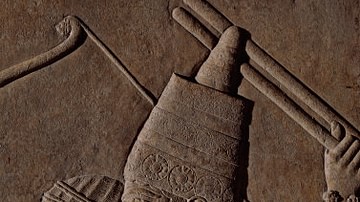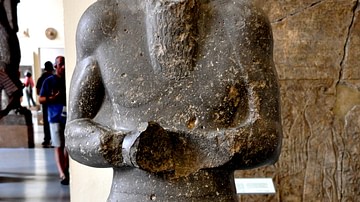Illustration
Sculpted relief illustrating the sporting exploits of the last great Assyrian king, Ashurbanipal, North Palace, room C, panel 20-22, Nineveh, modern-day northern Iraq. Neo-Assyrian Empire, reign of King Ashurbanipal, 668-631 BCE.
In ancient Assyria, lion-hunting was considered the sport of kings, symbolic of the ruling monarch’s duty to protect and fight for his people.
The hunting scenes, full of tension and realism, rank among the finest achievements of Assyrian Art. They depict the release of the lions, the ensuing chase and the subsequent killing.
The British Museum, London.
About the Author
Cite This Work
APA Style
Amin, O. S. M. (2014, February 04). Lion-Hunting Scene, King Ashurbanipal. World History Encyclopedia. Retrieved from https://www.worldhistory.org/image/2290/lion-hunting-scene-king-ashurbanipal/
Chicago Style
Amin, Osama Shukir Muhammed. "Lion-Hunting Scene, King Ashurbanipal." World History Encyclopedia. Last modified February 04, 2014. https://www.worldhistory.org/image/2290/lion-hunting-scene-king-ashurbanipal/.
MLA Style
Amin, Osama Shukir Muhammed. "Lion-Hunting Scene, King Ashurbanipal." World History Encyclopedia. World History Encyclopedia, 04 Feb 2014, https://www.worldhistory.org/image/2290/lion-hunting-scene-king-ashurbanipal/. Web. 06 May 2025.








